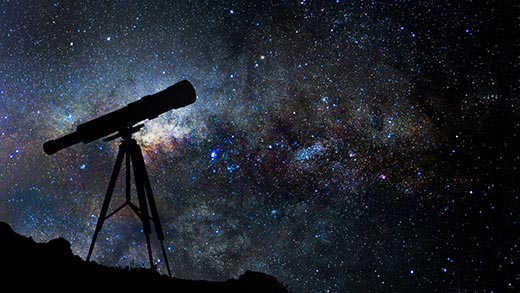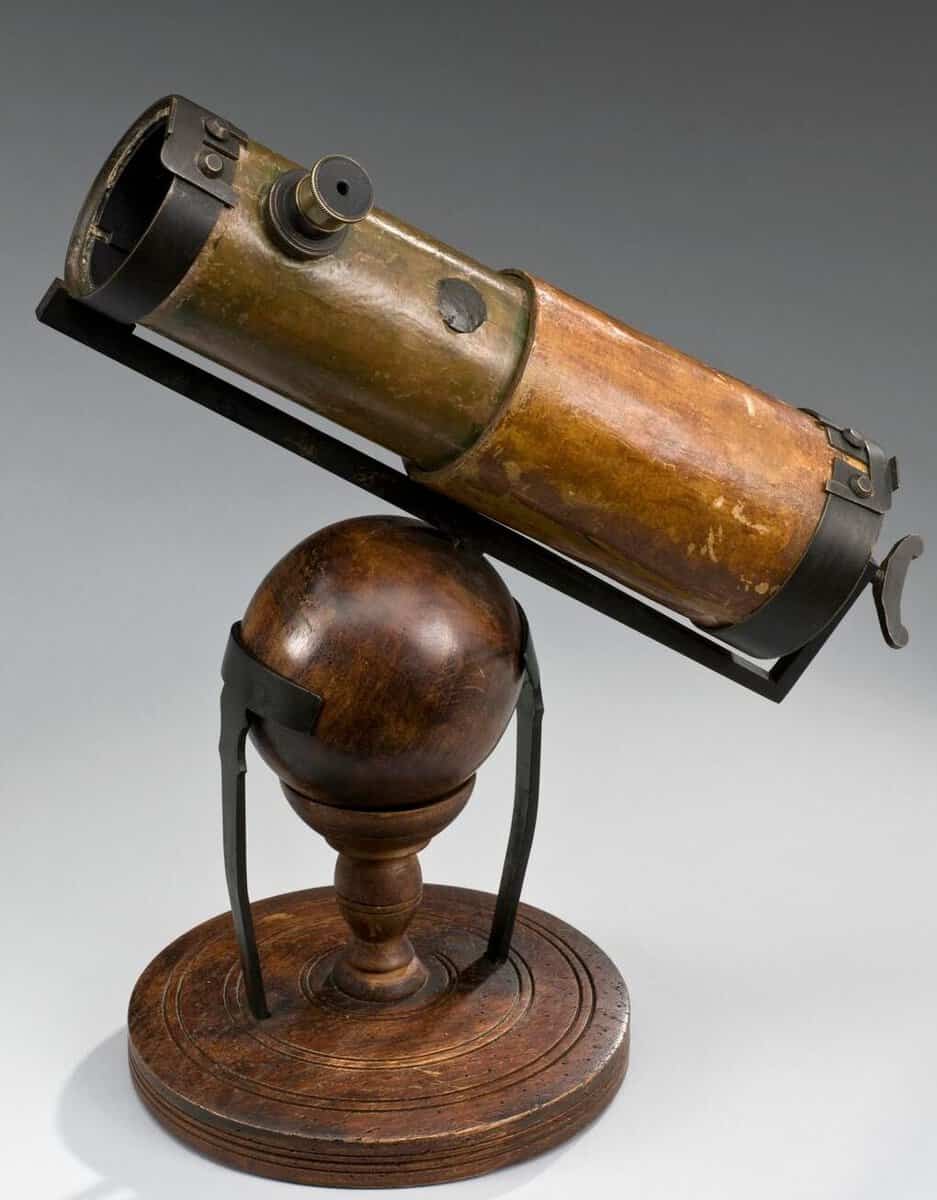The person who is credited with inventing the reflecting telescope is undoubtedly deserving of the highest admiration and profound appreciation from all contemporary astronomers. This groundbreaking invention ranks among the most momentous discoveries ever made. Thanks to the telescope, the study of the immediate cosmos became feasible, enabling the acquisition of invaluable knowledge about the composition of the universe.
The Origins of the Telescope
Leonardo da Vinci is credited with the earliest attempts to create a telescope, although there is no evidence of a working model. However, researchers have discovered sketches and descriptions of glass lenses used for observing the moon. It is possible that this is another fascinating aspect of da Vinci’s genius.
The concept of the telescope was later developed by Thomas Digges, who made his own attempts at constructing one. He utilized a convex lens and a concave mirror in his design. While the invention had the potential to work, the technology of the time was not advanced enough to bring the idea to fruition. Unfortunately, Digges was unable to create a functioning model. His efforts were ultimately overshadowed by his contribution to astronomy through his description of the heliocentric system.
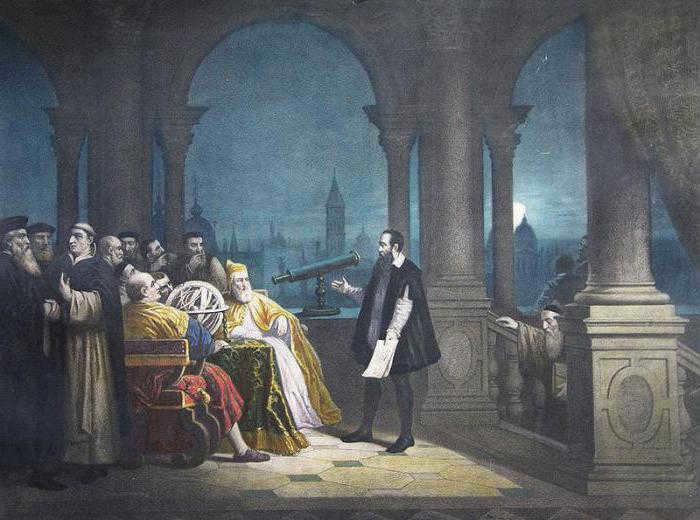
A Challenging Journey
The exact year of the telescope’s invention remains a subject of debate. In 1609, the Dutch scientist Hans Lippersgei submitted his magnifying invention to the patent office, naming it the telescope. However, the patent was rejected due to its perceived simplicity, despite the telescope tube becoming a popular household item. While it found favor among sailors, it proved inadequate for astronomical purposes. Progress was needed.
That same year, the telescope tube fell into the hands of Thomas Hariot, who found the invention promising but in need of significant modifications from the original design. Thanks to his efforts, astronomers were able to witness the moon’s unique topography for the first time.
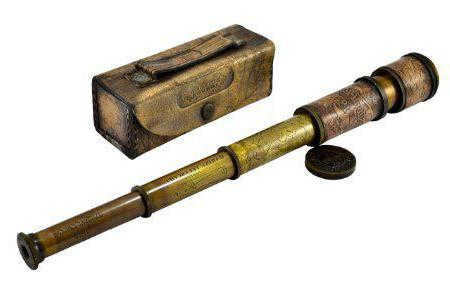
Galileo Galilei
Upon discovering the endeavor to invent a unique apparatus capable of enhancing the visibility of celestial bodies, Galileo Galilei was immensely intrigued by the concept. The Italian scholar resolved to fashion a comparable contraption for his scientific investigations. Leveraging his mathematical acumen, he skillfully conducted the necessary calculations. The resulting apparatus consisted of a cylindrical tube housing lenses, intended for individuals afflicted with ocular deficiencies. In essence, this marked the genesis of the inaugural telescope.
Nowadays, the refractor telescope is commonly referred to as this type of telescope. Thanks to its improved design, Galileo made numerous groundbreaking discoveries. He was able to provide evidence that the moon has a spherical shape and observed craters and mountains on its surface. The telescope’s 20-fold magnification allowed him to observe the four satellites of Jupiter, the presence of rings around Saturn, and much more. During that era, this device was considered the most advanced instrument, although it did have its limitations. The narrow tube significantly restricted the field of view, and the numerous lenses caused distortions that resulted in a blurry image.
The Era of Refractor Telescopes
The origins of the telescope’s invention are shrouded in uncertainty, as Galileo merely refined the existing tube for observing the celestial realm. Without Lippersgei’s revolutionary idea, the concept may not have even occurred to him. Over the subsequent years, there was a gradual refinement of this device, although progress was significantly hampered by the challenge of producing large lenses.
The breakthrough that spurred further advancements came with the invention of the tripod. This innovation eliminated the need to hold the tube for extended periods, enabling the extension of its length. In 1656, Christian Huygens unveiled a device with a magnification power of 100 times, achieved by increasing the distance between the lenses housed within a 7-meter-long tube. Just four years later, a telescope measuring 45 meters in length was successfully created.
Even a slight breeze could pose a challenge to scientific exploration. Researchers attempted to minimize image distortion by increasing the separation between the lenses. The evolution of telescopes focused on achieving greater length. The longest among them stretched to 70 meters. This situation significantly impeded progress and the construction of the apparatus itself.
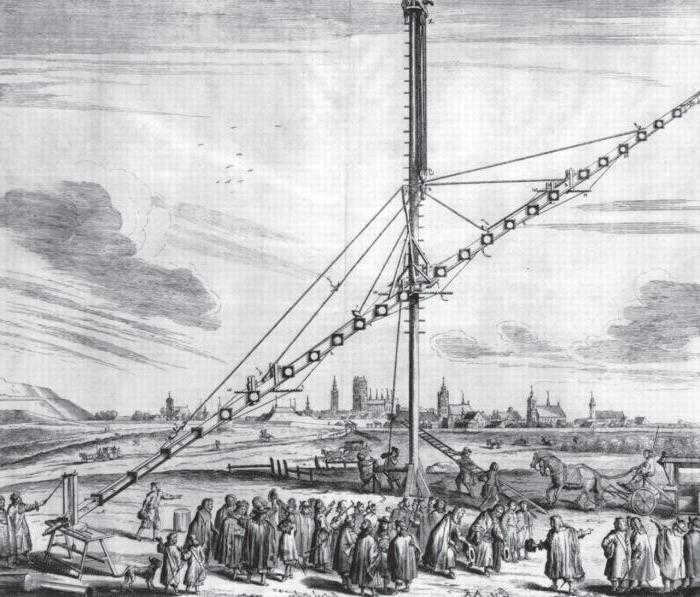
A revolutionary breakthrough
The field of space optics had reached a standstill, but it was clear that change was imminent. Who was the brilliant mind behind the invention of a groundbreaking telescope? None other than the legendary Isaac Newton. Instead of using a lens, Newton introduced a concave mirror for focusing, eliminating chromatic distortions. Refractor telescopes quickly became obsolete, making way for the superior refractor telescopes.
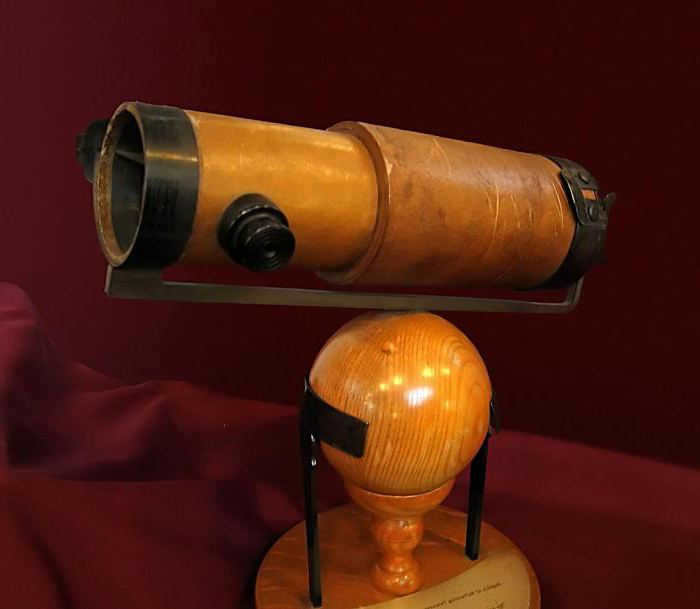
The revolutionary discovery
The year 1720 marked a significant milestone in the field of astronomy. During this time, optical experts achieved a major breakthrough by creating a reflex mirror with a diameter of 15 cm, surpassing Newton’s mirror with its mere 4 cm diameter. This discovery revolutionized the study of the universe, as it provided a much easier way to explore its mysteries. The compact size of these telescopes, which were only 2 meters long compared to the massive 40-meter giants, made observing the cosmos more accessible to a wider range of individuals.
However, despite their compactness and convenience, these telescopes faced a major challenge. The metal alloy used in the mirrors would quickly fade, causing them to lose their reflective properties. Fortunately, the mirror design was soon enhanced and improved, incorporating new features to overcome this limitation.
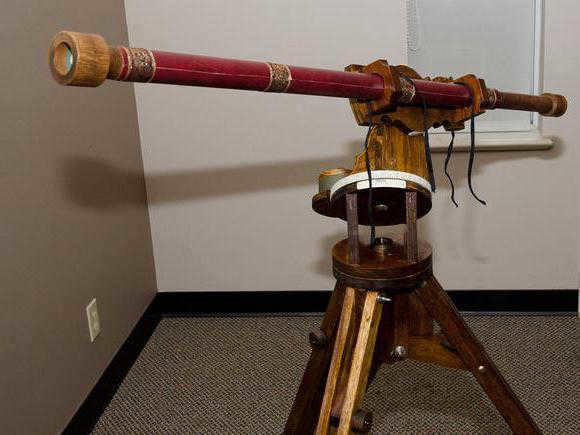
Introduction of Two Mirrors
Another advancement in the design of the telescope can be attributed to Cassegrain, a French inventor. He conceived the idea of utilizing two glass mirrors instead of a single one made of a metal alloy. His designs proved to be effective, although he was unable to witness it firsthand due to limitations in the technological equipment of his time.
The Newton and Cassegrain telescopes can be regarded as the earliest modern models. The development of telescope construction continues to be based on their principles. The contemporary space telescope, known as the “Hubble,” is constructed using the Cassegrain principle, which has already provided humanity with a wealth of information.
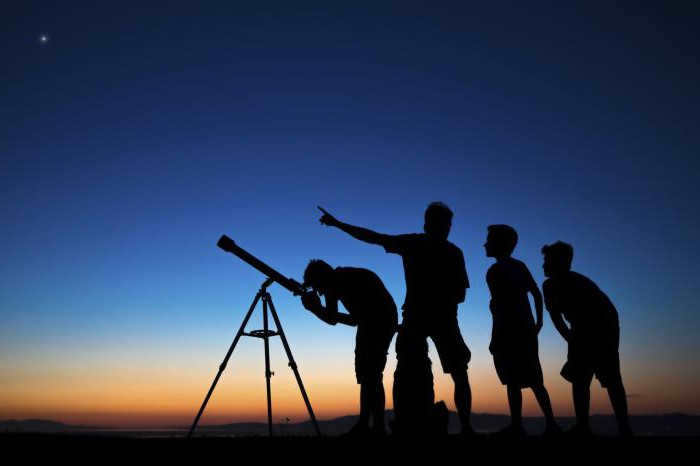

Returning to the basics
Reflecting telescopes were ultimately unable to prevail. Refracting telescopes made a triumphant comeback with the introduction of two new types of glass: crown, a lighter glass, and flint, a heavier glass. This combination proved useful for the inventor of a telescope without chromatic aberration. It turned out to be the brilliant scientist J. Dollond, and the new type of lens was named after him – Dollond lenses.
The refractor telescope saw a resurgence in the 19th century as advancements in technology enabled the production of lenses with optimal shape and larger sizes. In 1824, the lens diameter was 24 centimeters, which increased by two increments by 1966, and reached 76 centimeters in 1885. In other words, the lens diameter grew at an average rate of approximately 1 centimeter per year. This shift in focus from mirror devices to lens devices resulted in improved viewing angles and larger images.
Enthusiastic Hobbyists
Amateur astronomers breathed new life into reflector installations. One such enthusiast was William Herschel, who, despite his main occupation being music, made a number of remarkable discoveries. Among his many achievements, his first was the identification of the planet Uranus. Encouraged by this unprecedented success, Herschel set out to construct a telescope with an even larger diameter. Using his home laboratory, he managed to create a mirror measuring 122 cm in diameter, allowing him to observe two previously unknown satellites of Saturn.
The accomplishments of these hobbyists inspired further experimentation. The primary challenge with metal mirrors, their tendency to rapidly cloud over, seemed insurmountable. This dilemma led French physicist Leon Foucault to propose the idea of incorporating an additional mirror into the telescope. In 1856, he crafted a glass mirror coated with silver for the magnifying device. The outcome far exceeded even the boldest predictions.
Currently, both constructions are being actively utilized, with ongoing advancements in optics. This progress is being fueled by modern computer and space technologies. The current record holder for the largest telescope on Earth is the impressive Canary Telescope. However, its dominance will soon be overshadowed by upcoming projects that are already in progress, featuring mirrors with diameters of 30 meters compared to its 10.4-meter diameter.
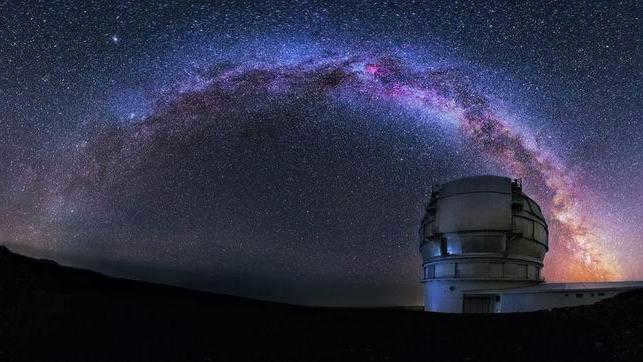
Constructing enormous telescopes at elevated locations is a strategic approach to enhance the bending of light caused by Earth’s atmosphere. Developing space telescopes is a highly promising venture, as they offer unparalleled image clarity and resolution. None of these advancements would have been achievable if it weren’t for the invention of the telescope tube in the 17th century.

Many of us have a deep fascination with gazing at the enchanting and captivating night sky. It is often the romantics and those who enjoy lying in open fields, breathing in the scent of fresh grass, and counting the white dots on the dark canvas who are most captivated by the stars.
However, there is another group of sky enthusiasts who are scientists. These individuals not only appreciate the beauty of celestial bodies, but also utilize special mirror telescopes to conduct scientific research. Through these telescopes, they are able to calculate distances and extract valuable information that is crucial for the advancement of mankind.
Optical devices have been invaluable tools for mankind for thousands of years, aiding in the exploration of distant planets and serving as essential instruments in everyday life. Many individuals utilize telescopes, binoculars, and magnifying glasses for various purposes, often unaware of their original scientific intent. It is a common experience for people to have used a magnifying glass to start a fire or to have looked through binoculars in an inverted manner. These actions further highlight the fundamental need that humans have for lenses and magnifying glasses.
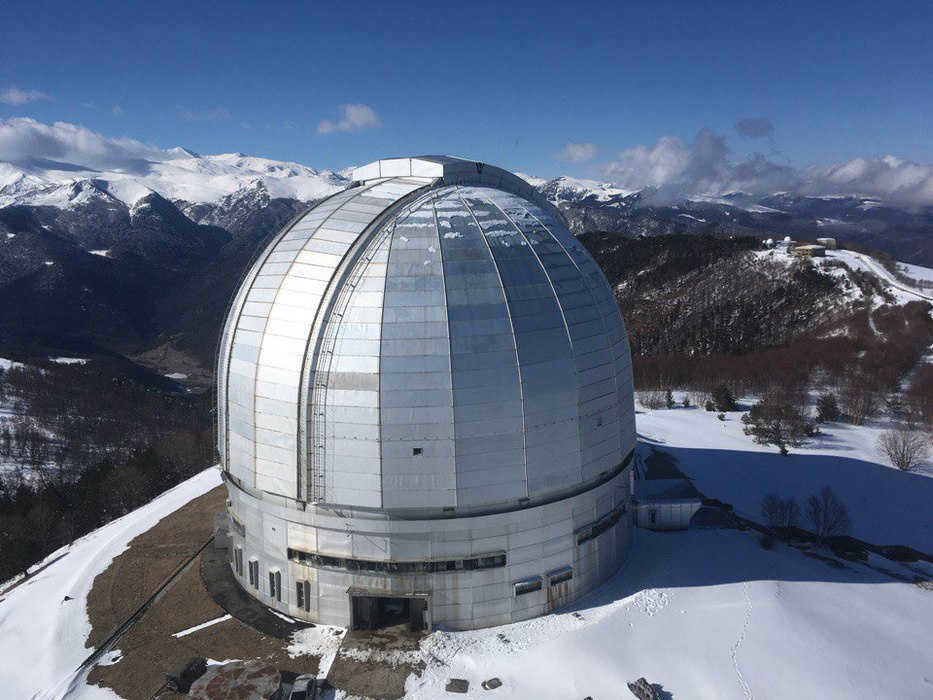
What is a Telescope?
A telescope, also known as a reflector, is a specialized optical device that operates on the principle of gathering light particles through a mirror plate. The initial invention of the mirror telescope is credited to the renowned English mathematician, Isaac Newton.
Following Newton’s innovation, numerous other brilliant minds presented their own variations of the “far-sighted tube.” However, it was Newton’s straight lens that became the benchmark for nearly all high-powered optical instruments, particularly those utilized in scientific and military applications. The breakthrough achieved by the English genius permanently eliminated the issue of chromatic aberration, which was the primary and inconvenient drawback of all telescopes during that era.
Evolution of Optics Throughout History
Humanity’s insatiable desire to observe distant objects and phenomena predates the invention of advanced reflecting telescopes. The fascinating tale of optics began when our ancestors first peered through a fragment of mica, manipulating its angle to bring the horizon into sharper focus.
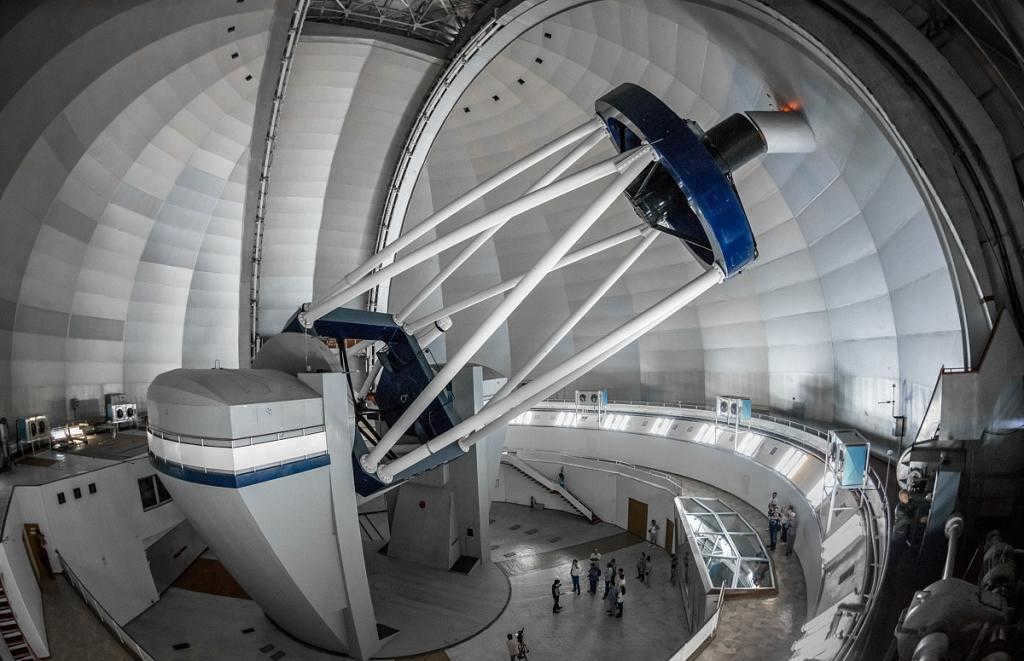
Since that time, humanity has been tirelessly searching for methods to achieve a comparable outcome. People actively devised frameworks, holders, polished mica, and experimented with quartz.
With the introduction of glass, experiments in creating “approximated image devices” continued, using various flawed materials that somehow distorted the image through space.
Many years passed before mankind successfully constructed the first reflective telescope. However, it is crucial to remember that the entire optical instrument industry started with a tiny piece of mica.
Since the time humans uncovered the makeup of glass, they no longer required mica and quartz as replacements or equivalents for this extraordinary material. The initial optical devices created by humans were relatively uncomplicated structures, such as a magnifying glass or a monocle, which involved a piece of glass expertly placed within an iron frame.
United Kingdom
Gregory’s method
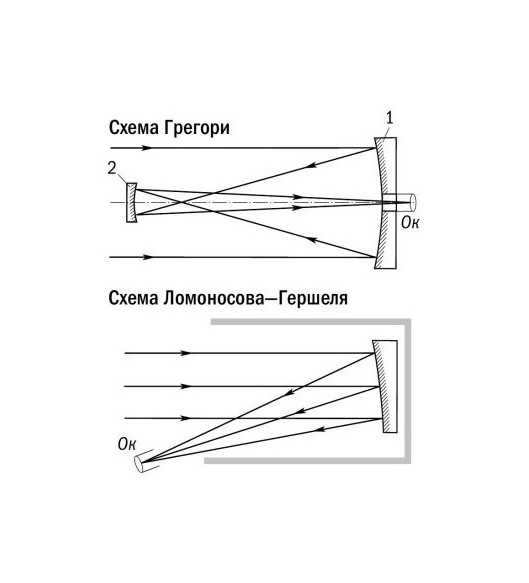
However, it is not only Sir Isaac Newton who can be credited with the invention of the telescope. The concept of looking at objects through glass had been studied long before Newton’s time, so there are multiple contenders for the title of the inventor of the reflecting telescope.
One such contender is James Gregory, a fellow countryman of Newton. In 1663, Gregory proposed his own version of a “far-sighted tube” that incorporated three glass panes. He described the design in his book Optica Promota, which also featured other innovative ideas for the use of glass in daily life.
The initial design of Gregory’s mirror telescope appears relatively straightforward. It utilizes a concave parabolic mirror to gather and merge disparate light beams, which are then directed towards a smaller concave elliptical mirror. In turn, this smaller mirror reflects the light back into the central aperture of the larger glass, which houses the eyepiece. The focal length of Gregory’s mirror telescope is notably longer than that of the Newtonian equivalent, resulting in a straight, undistorted image for the viewer, as opposed to the inverted 180-degree image produced by the previous model.
In 1672, Laurent Cassegrain proposed a similar system. His design also utilized two mirrors of different sizes, but he preferred to work with the direct reflection of light. This allowed him to simplify the design by transmitting light beams between two glass panes.
A unique feature of Cassegrain’s telescope was that the secondary mirror was larger than the primary mirror. Two hundred years later, this concept would be adopted by the renowned Soviet optician D. D. Maskutov, who established the foundation of Russian optical instrument science and invented the basic model of the telescope. This model served as the basis for all image approximation instruments in the Soviet Union.
These systems, which resemble the Ritchie-Cretien development, are essentially enhanced and modified adaptations of Cassegrain’s concepts.
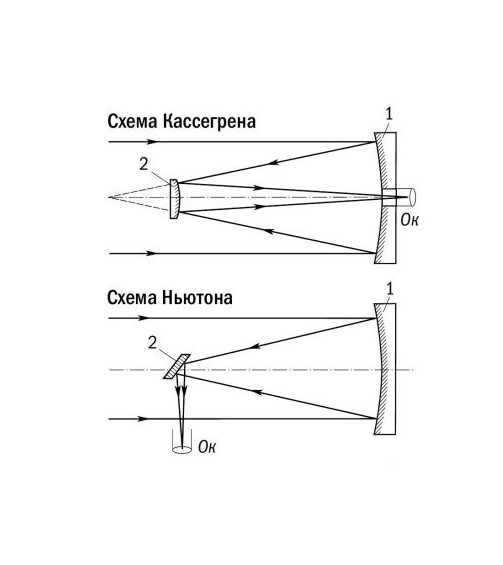
Lomonosov’s ground-breaking invention
One notable deviation from this trend is Herschel’s theory of optics, which was greatly enhanced by the ingenious Russian polymath Mikhail Lomonosov. The core concept of Lomonosov’s innovation lies in the replacement of the primary lens with a concave mirror.
Why do we use telescopes?
It is widely known that telescopes are primarily utilized by astronomers and other scientists to examine the celestial surface. The information gathered from these instruments allows scientists to draw conclusions that have a profound impact on various fields of study. Disciplines such as geography, geodesy, biology, biophysics, and many others rely on the findings of astronomers. Even something as simple as predicting the weather would be nearly impossible without accurate data on the position of celestial bodies in relation to the sun.
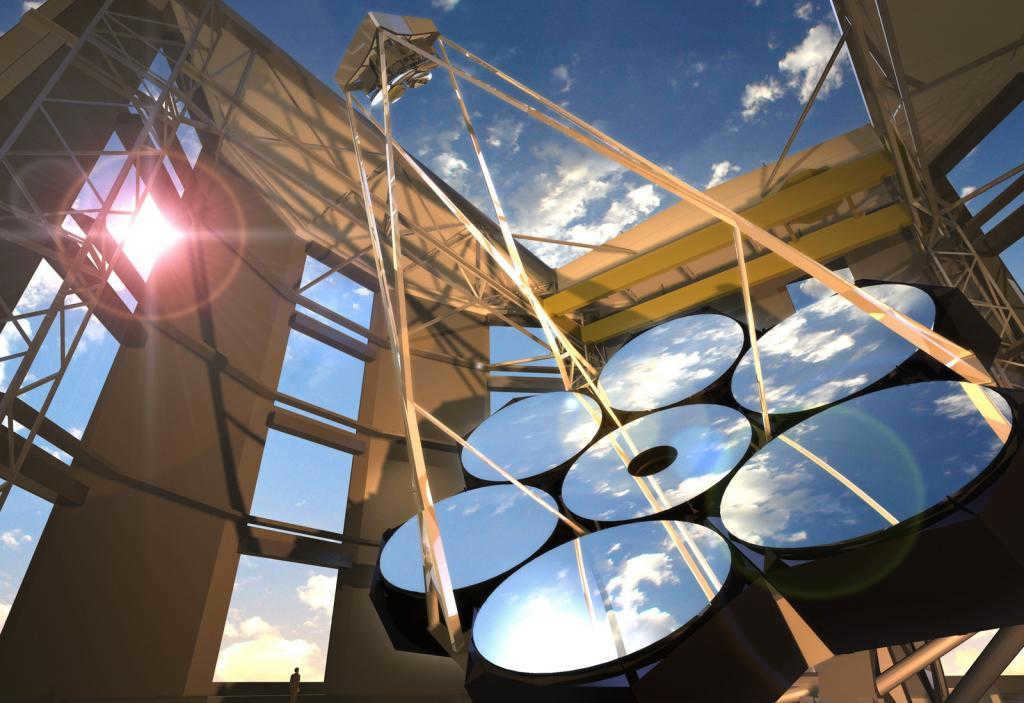
A telescope is necessary to directly observe various objects and phenomena up close, which can be incredibly significant for both science and humanity as a whole. Different instruments, varying in size and characteristics, are utilized for both casual stargazing and for delving into the enigmas of far-off nebulae and galaxies.
The most massive gadgets
In the present era, there exists an immense assortment of various technological gadgets that enable individuals to delve into the vast expanse of the celestial realm. The majority of these devices are simply astounding in terms of their dimensions, occupying an extensive amount of space. As an illustration, the most colossal telescope of the Soviet Union, known as the “BTA,” held the title of the largest in the world for quite some time due to its main mirror boasting an impressive diameter of six meters!
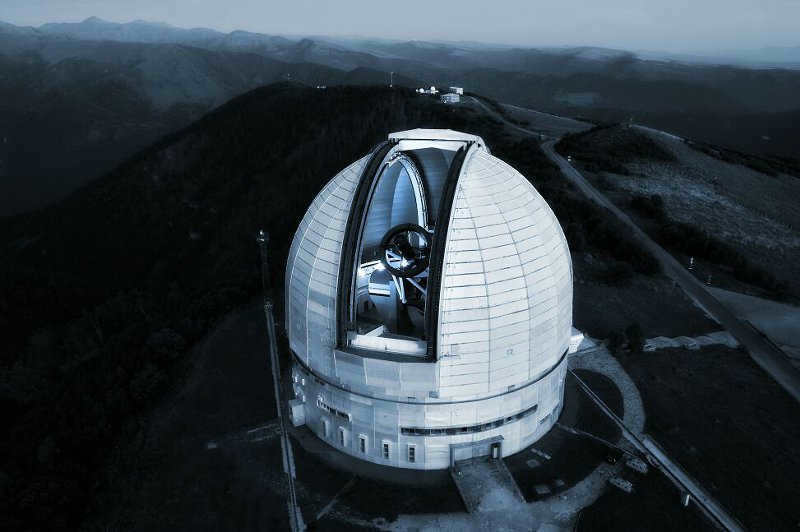
In 2005, a larger astronomical device was created known as the “Large Binocular Telescope”. It stands out because its mirror is made from a single, unbroken piece of glass.
During the same year, the “Great South African Telescope” was built in the Republic of South Africa. Its main mirror was composed of ninety-one massive hexagons, all of equal size.
Creation of the Optical Mirror Telescope
The construction of an optical mirror telescope is relatively straightforward. It is possible for even a student to construct a comparable device using just one or two lenses and a hollow cardboard tube. Although professional-grade instruments are not typically constructed from glass and paper, they operate on the same fundamental principles.
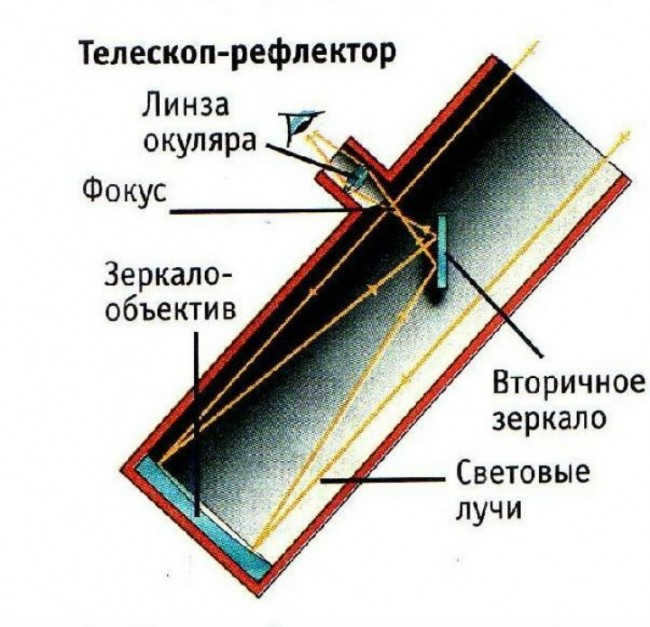
The apparatus is a sealed structure consisting of a solid tube with a cavity, containing lenses of diverse forms and configurations inserted at either extremity. The back plane of the initial lens is in alignment with the front plane of the subsequent one, resulting in the impression of bringing into close proximity an image that is, in reality, distant from the observer.
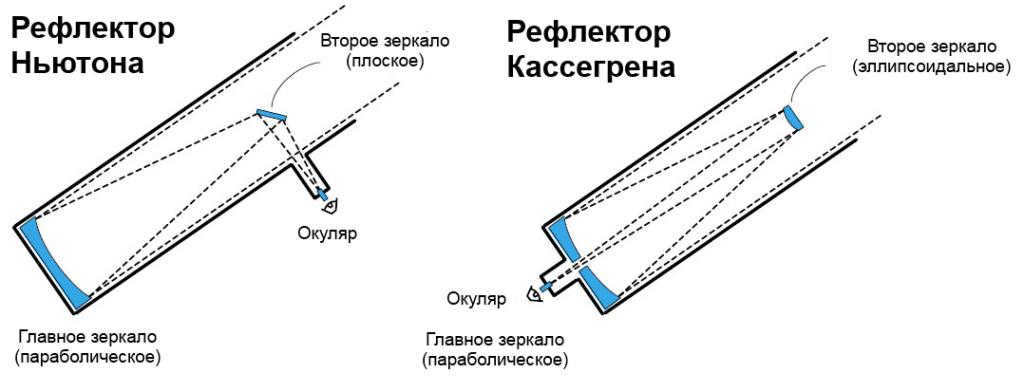
Customer Reviews
Looking for a good telescope? The answer to this question becomes much simpler when you consider the intended use. If you’re just looking to get a closer look at the starry night sky, any budget beginner model will suffice. However, if you’re an astronomer, even an amateur one, it may be worth considering a more expensive option.
For those interested in scientific research and pursuing a deeper understanding of the cosmos, a professional-grade telescope is necessary, albeit quite costly. There are no hard and fast rules for selecting a telescope; it ultimately comes down to a clear understanding of your specific needs and goals!
Many of us have a deep fascination with gazing up at the vast expanse of the night sky, captivated by its breathtaking and enchanting allure. Of course, the majority of those who show little interest in the stars are typically either hopeless romantics or individuals who relish the simple pleasure of lying in a field, inhaling the scent of fresh grass, and together with their beloved, counting the multitude of white dots that adorn the velvety black canvas above.
However, there exists another group of sky enthusiasts, individuals who are not content with merely observing the celestial wonders with their naked eyes or through binoculars. These individuals are typically scientific-minded, utilizing sophisticated telescopes and mirrors to not only revel in the beauty of the stars, but also to engage in rigorous scientific endeavors, calculating necessary distances and extracting vital information that is crucial for the advancement of humanity.
Optical devices have been invaluable tools for humans for thousands of years, aiding in the exploration of far-off planets and serving as essential items in everyday life. Many individuals use telescopes, binoculars, and magnifying glasses for various purposes, often unaware of the scientific origins of these objects. It is common for people to use a magnifying glass to start a fire or to accidentally look through binoculars upside down. These experiences further demonstrate the vital role that lenses and magnifying glasses play in meeting humans’ needs.
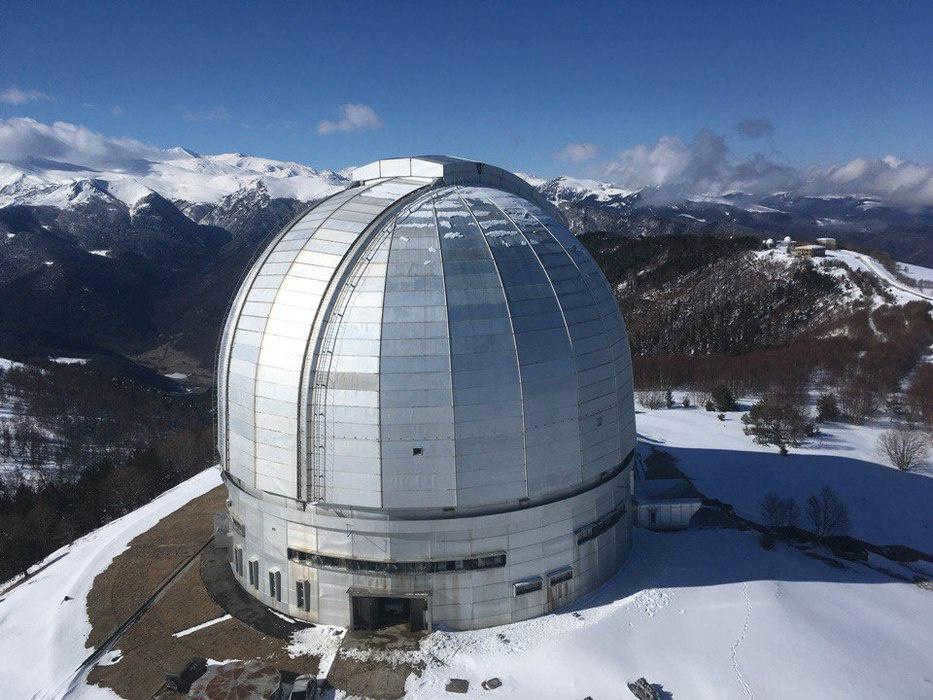
What is a Telescope?
A telescope, also known as a reflector, is a specialized optical device that operates by collecting particles of light through a mirror plate. The original mirror telescope was created by the renowned English mathematician, Isaac Newton.
Following Newton’s invention, many other brilliant minds proposed their own variations of the “far-sighted tube.” However, it was Newton’s straight lens that became the standard for almost all high-powered optical instruments, particularly those used in scientific and military applications. The advancements made by this English genius permanently eliminated the issue of chromatic aberration, which was the primary and inconvenient drawback of telescopes during that era.
The reflecting telescope, being an optical device, is considered to be related to the telescope and has a similar design, although it differs in the size and quality of the lenses.
Origins of Optics
Humanity’s desire to observe distant objects or phenomena predates the invention of large reflecting telescopes. The scientific exploration of lenses began when humans first looked at the world through a piece of mica, tilting it at the perfect angle to bring the horizon a bit closer.
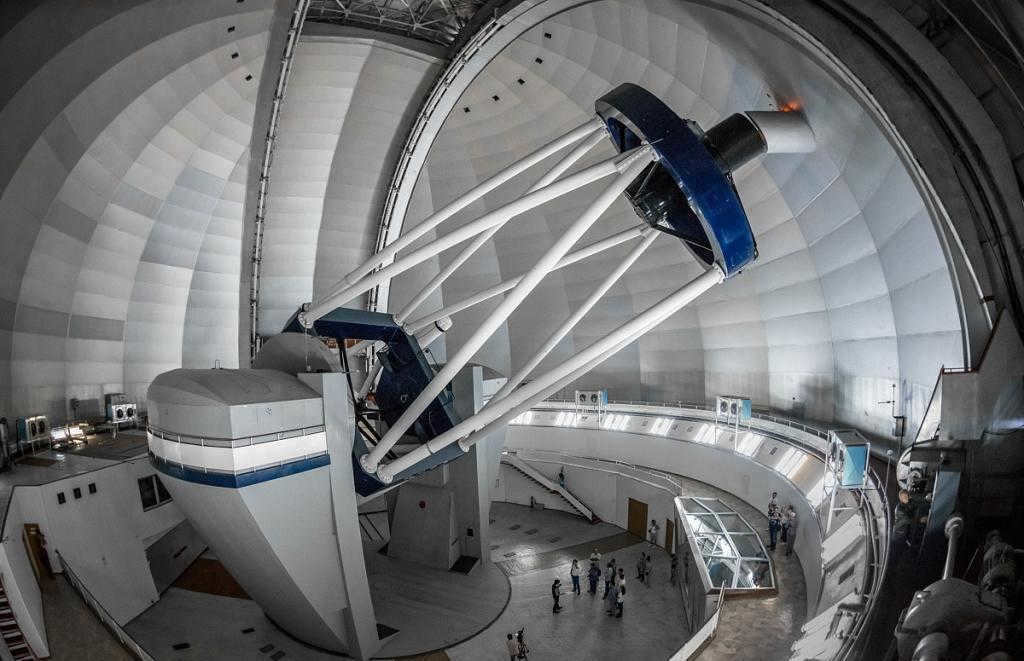
Since that time, humanity has been tirelessly searching for methods to achieve a similar outcome. People actively innovated frames, holders, and polished mica, while also experimenting with quartz.
With the introduction of glass, experimentation with the creation of a “device approximating the image” continued, as various faulty materials were used, which in some way distorted the image through space.
Many years passed before humanity was able to build the first reflecting telescope. However, it is important to recall that the entirety of the optical instrument industry began with a minuscule piece of mica.
Ever since humans uncovered the makeup of glass, they no longer required mica and quartz as alternatives or counterparts to this extraordinary material. The initial optical devices created by humans were relatively basic designs, such as a magnifying glass or a monocle, which consisted of a piece of glass expertly placed in an iron frame.
Gregory’s approach
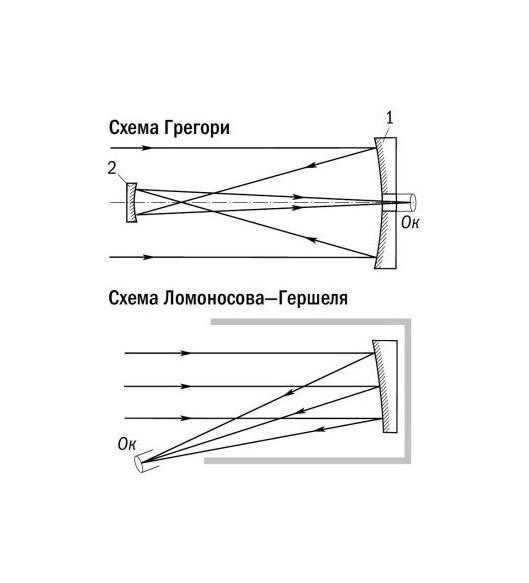
Nevertheless, the credit for inventing the telescope cannot be solely attributed to the discoverer of gravity, as the concept of observing objects through glass was explored long before Newton’s time. There are multiple contenders for the title of the inventor of the reflecting telescope.
One such contender is James Gregory, a compatriot of Newton, who proposed his concept of a “long-sighted tube” in 1663. This version of the telescope featured three glass panes, and Gregory detailed its design in his book Optica Promota, which also included other groundbreaking ideas for the practical use of glass in everyday life.
The design of Gregory’s initial mirror telescope may appear rather straightforward. It relies on a concave parabolic mirror to gather divergent light rays, converging them and redirecting them towards a smaller concave elliptical mirror.
The smaller mirror then reflects the light back into the central aperture of the larger lens, which protects the eyepiece. The focal length of Gregory’s mirror telescope is considerably longer than that of the Newtonian model, allowing the viewer to observe a straight and level image instead of the upside-down 180-degree image produced by the previous design.
In 1672, Laurent Cassegrain proposed a similar system. He also used two mirrors of different sizes, but instead of using indirect reflection, Laurent chose to work with direct reflection, simplifying the design to the transmission of light beams between two glass panes.
A notable feature of his telescope was that the secondary mirror was larger than the primary mirror. Two centuries later, this concept would be adopted by the renowned Soviet optician D. D. Maskutov, who laid the groundwork for Russian optical instrument science and invented the basic telescope model, which served as the foundation for all image magnification instruments in the Soviet Union.
There are numerous systems that resemble the Ritchie-Cretien development, but they are simply enhanced and modified versions of Cassegrain’s concepts.
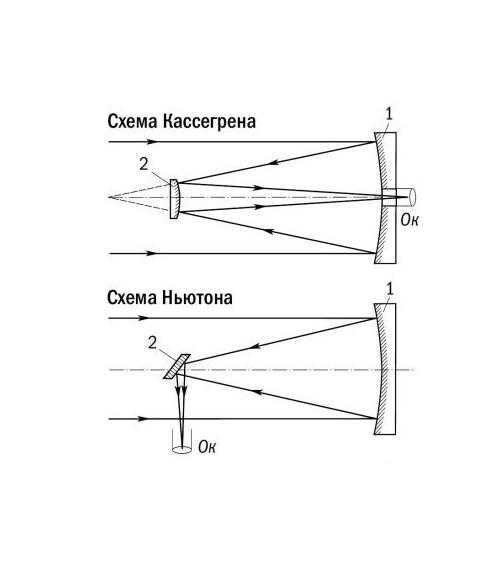
Invention by Lomonosov
One exception to this is the optical theory proposed by Herschel, which was greatly enhanced by the brilliant Russian polymath, Mikhail Lomonosov. The concept revolves around the replacement of the main glass with a concave mirror.
Why do we use telescopes?
The primary purpose of telescopes is to study the celestial surface. Astronomers and other scientists rely on the data obtained from these instruments to make conclusions that have a global impact on various branches of science. Disciplines such as geography, geodesy, biology, biophysics, and many others are dependent on the field of astronomy. Even something as simple as a weather forecast would be nearly impossible without timely data on the position of celestial bodies relative to the sun.
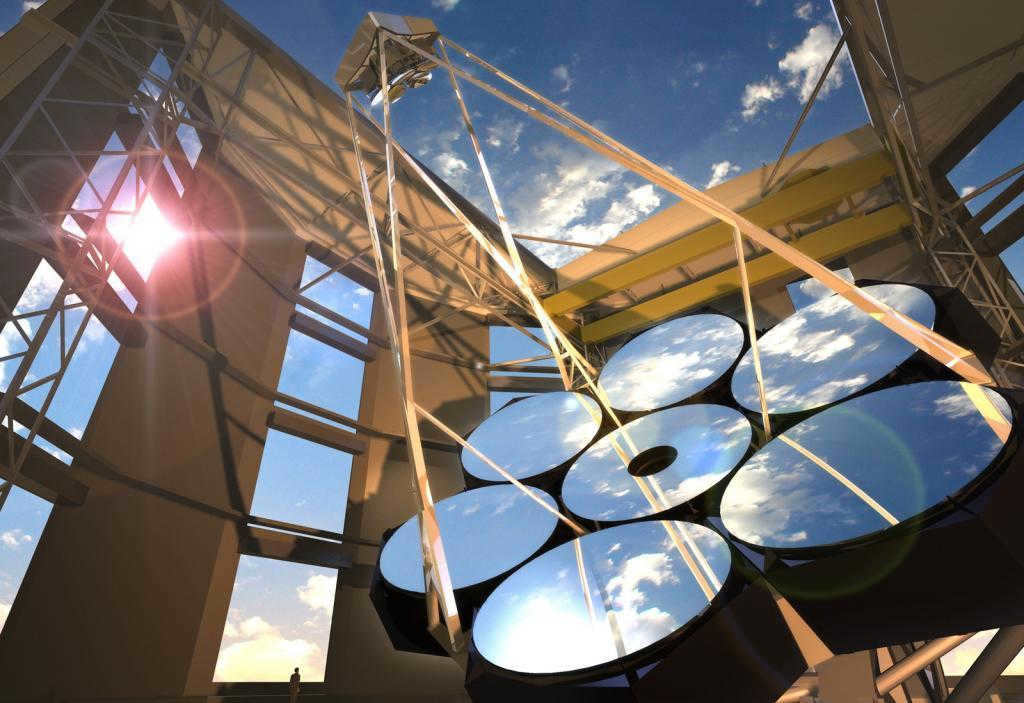
In order to directly observe various objects and phenomena that could have significant importance for science and humanity, a telescope is required. There are different instruments of varying sizes and characteristics that are utilized for both casual stargazing and for delving into the enigmas of far-off nebulae and galaxies.
The biggest machines
In the modern era, there is an abundance of diverse technological contraptions that enable individuals to delve into the vast expanse of the celestial realm. A substantial portion of these devices are truly extraordinary in terms of their colossal proportions and the immense space they occupy. One noteworthy example is the Soviet Union’s most expansive telescope, known as the “BTA,” which held the prestigious title of being the largest telescope in the world for quite some time due to its colossal main mirror diameter of six meters!
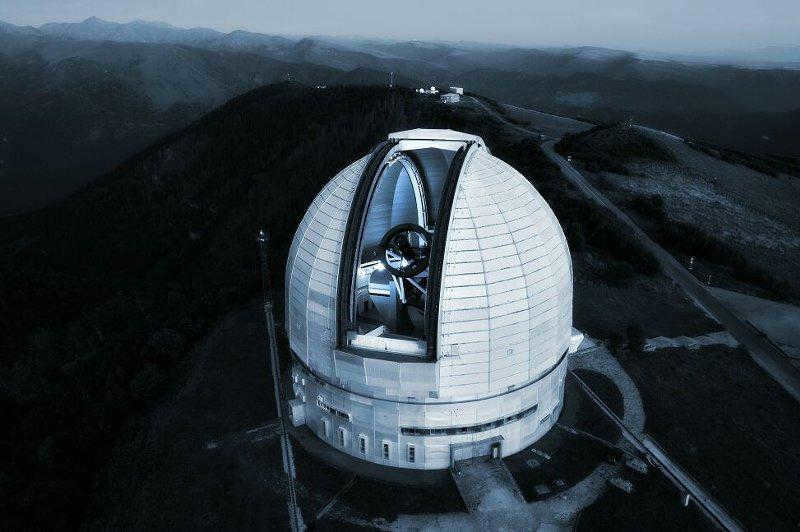
In 2005, a larger telescope was constructed known as the “Large Binocular Telescope”. What sets it apart is its one-piece mirror, made entirely out of a single piece of glass.
In that same year, the “Great South African Telescope” was erected in the Republic of South Africa. Its main mirror was composed of ninety-one massive hexagons, all of equal size.
Device for observing with mirrors
The optical mirror telescope is characterized by its relatively simple structure. It is possible for any student to construct a similar apparatus independently, using just one or two lenses and a hollow cardboard tube. Naturally, professional-grade devices are not constructed out of glass and paper, but they operate on a similar principle.
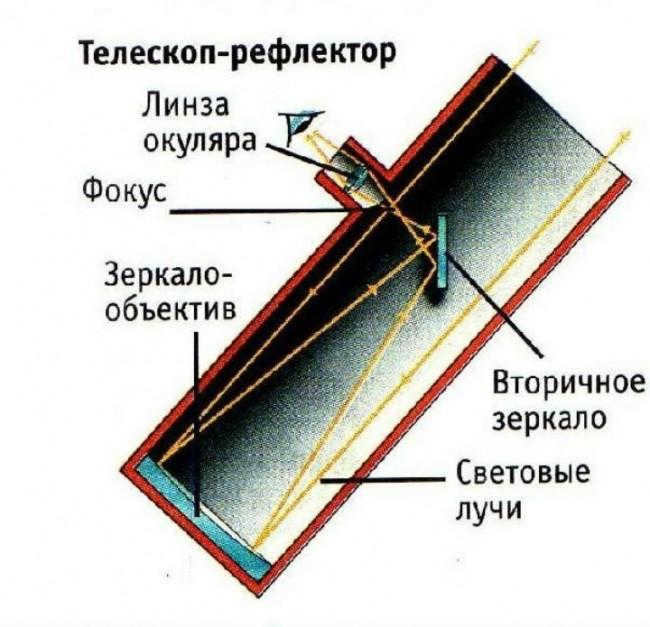
The apparatus consists of a sealed structure comprised of a cylindrical tube, with a variety of lenses of different shapes and configurations inserted at each end. The back surface of the initial lens is precisely aligned with the front surface of the subsequent lens, resulting in the illusion of bringing a distant image closer to the viewer.
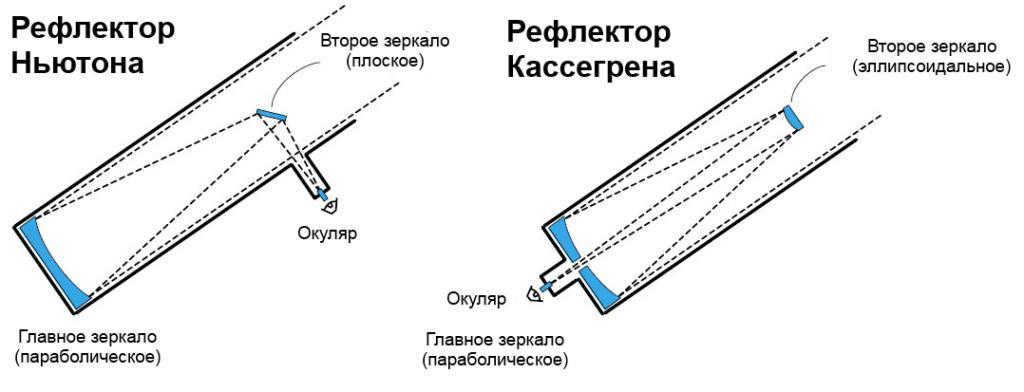
Testimonials
Determining how to select a high-quality telescope is easily answered if one is aware of the intended use. For those who simply wish to observe the night sky with a bit more detail, a budget-friendly model for beginners will suffice. However, for individuals who have a passion for astronomy, even if they are amateur astronomers, it may be worth considering the purchase of a more expensive alternative.
For those individuals who have a keen interest in science and research, it is important to recognize that a professional-grade instrument is necessary and will come with a higher price tag. There are no specific guidelines for selecting a telescope; instead, it is crucial to have a clear understanding of your specific needs and desires!
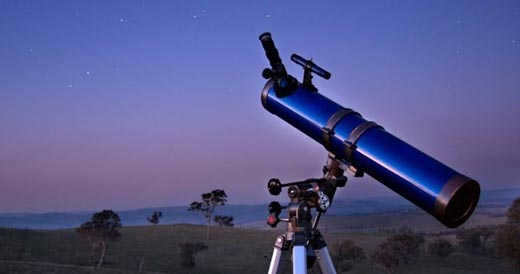
The term “telescope” is derived from two Greek words meaning “far” and “to view”.
A telescope is an exceptional optical instrument that enables the observation of distant objects by magnifying them, making them easily discernible to the naked eye. This is made possible through the utilization of high-quality lenses.
Who was the inventor of the telescope?
The scientist Galileo Galilei is widely believed to be the first person to use lenses to magnify distant objects. In 1610, he created a telescope that allowed him to observe craters on the moon, Jupiter’s satellites, and other fascinating celestial details. However, during excavations in Troy, archaeologists discovered crystal lenses, suggesting that people may have had the ability to magnify objects even earlier.
Telescopes are typically housed in observatories, specialized structures designed for observing various natural phenomena. Observatories, which are often situated on elevated terrain and feature rotating domes, are equipped with comprehensive telescope complexes.
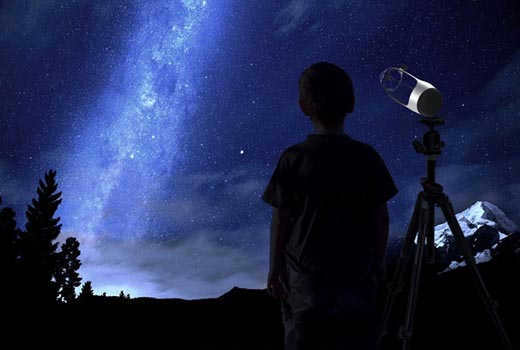
As astronomy and other sciences advanced, telescopes improved and became more sophisticated. This allowed for the examination of objects in the electromagnetic spectrum using intricate systems of detectors and sensors. These equipment operates across various wavelength ranges.
Currently, there are telescopes that operate in the X-ray and radio spectrums. Although these telescopes differ significantly from one another, they all share a common purpose: enabling the detailed study of objects located at vast distances.
Modern equipment known as radio telescopes is utilized to analyze and collect electromagnetic radiation emitted by distant objects. This radiation is then directed towards the focal point, where an amplified image or signal is produced, enabling a detailed examination of the object under study. Additionally, the exploration of space can be conducted using thermal imagers designed for space, which capture and transmit infrared images of the surfaces of remote objects.
One of the most renowned telescopes worldwide is the Hubble Space Telescope. This groundbreaking instrument functions as a space observatory and is positioned in Earth’s orbit. It was named after Edwin Hubble, an American astronomer, and was launched into orbit in 1990.
During the following fifteen-year period, the orbiting telescope captured over a million photographs of twenty-two thousand celestial objects, such as galaxies, planets, stars, and nebulae. This exceptional telescope not only captured the images but also transmitted them back to Earth.
Classification of telescopes
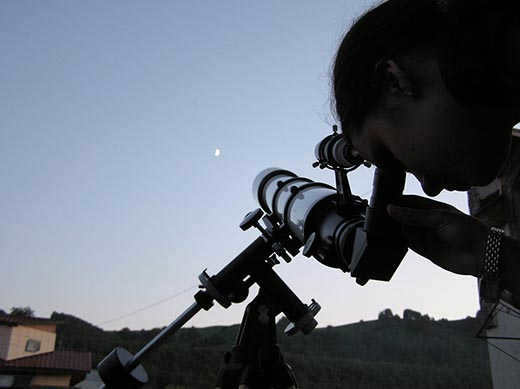
There are different types of optical telescopes based on the type of focusing element they use. These can be divided into refractors, which use lenses, and reflectors, which use mirrors.
A refractor telescope consists of a tube with a lens at the front and an eyepiece at the back. The lens of a refractor telescope is typically a compound lens made up of multiple elements with a large focal length. The largest refractor telescope in the world has a lens with a diameter of 101 cm.
A reflector telescope, on the other hand, uses a concave mirror instead of a lens as its objective. This mirror is located at the back of the tube. Reflector telescopes are commonly used by amateur astronomers as they are less expensive than refractor telescopes and can be assembled by oneself.
When using large telescopes, the observer has the option to operate in the primary focus within a dedicated cabin that is installed in the main tube. Versatile professional telescopes are specifically designed to allow the observer to select the focus that best suits their needs. However, it is worth noting that the Newtonian focus is exclusive to amateur optical telescopes.
